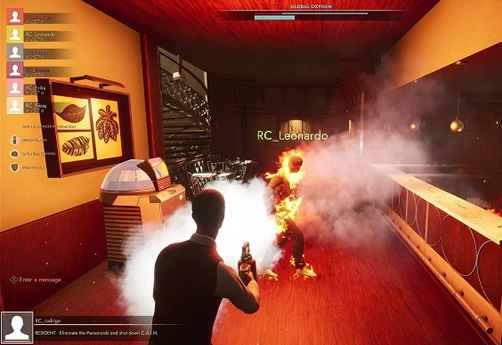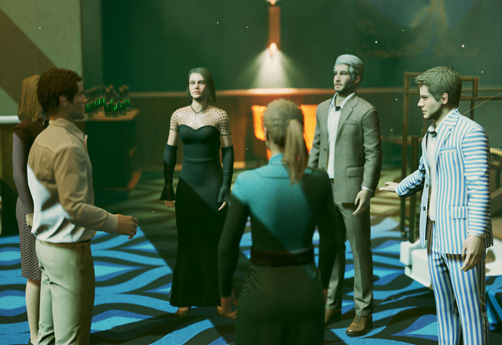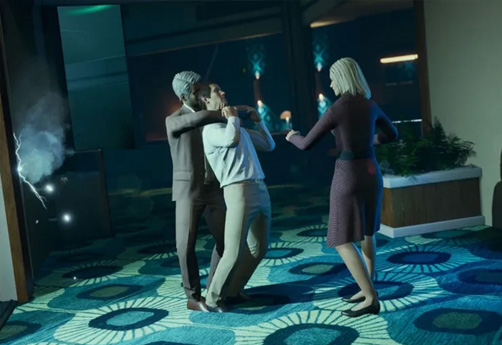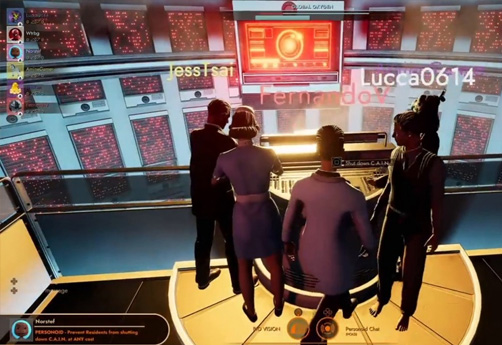First Class Trouble Game Review
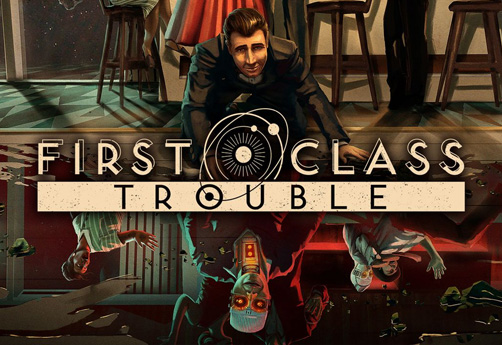
Inspired Mid-20th Century Sci-Fi Aesthetic
Good, Slight Tweaks On The Social Deduction Template
Genuinely Fun Moments
Rough Launch-Day Issues
Uncoordinated Design Choices That Lead To Dumb Outcomes
Early & Late Stages Can Get Repetitive & Stale
Overpriced Cosmetic Packs
Overall, First Class Trouble's soundscapes don't quite capture the mood as much as the feel-good art style. A bumpy start in and of itself may not detract from the overall experience that much.
About The Game
Due to COVID-19 and the associated restrictions on traveling, various professions, and more, game streaming viewership and total hours recorded have reached new heights in 2020. One of the biggest draws wasn’t the upcoming Call of Duty beta or any other battle royale title. Instead, the understated social reasoning game released two years ago earned serious fame.
First Class Trouble is a typical example of a copy of Among Us. Your luxury space cruise ship is going through something of a mutiny. After most of the passengers are killed by robotic servants called “Personoids”, a few passengers equipped with oxygen rebreathers are forced to leave the ship and must find a way to the AI mainframe (called “CAIN”) With several robots disguised as humans, making this core non-killing isn’t easy. Teamwork and careful reasoning are key to saving the ship or killing the rest of the guests. For those unfamiliar with this asynchronous template, imagine two groups with an odd number of members. These passengers outnumber murderous servants 2 to 1, but at first, it’s hard to tell who’s for or against. Each party can perform the same basic actions to refill oxygen, fix leaks, or open security to her door for more loot.
Game Features
Humanoids have some special tricks: covert audio channels, biovision to monitor nearby enemies (Arkham’s “detective mode”), remote activation of gas leaks, and instant access to shortcut tunnels. , overdose syringes strategically placed on the map.
Passengers have a wealth of options to defend themselves against attackers. The most obvious democratization measure is to elect someone from the airlock when the council is called. Potential Personides can be interrogated by their peers in a variety of ways. They may have been arrested for sabotaging an oxygen transfer station, unlocking a hypodermic injection station, or fabricating a gruesome alibi. Passengers have another aggressive option if they want to expand their acting.
You may have to get your hands dirty, as briefings are only done when the main objective is accomplished, not when a corpse is found. First Class Trouble is also very interesting for how fast and limited each match is. With a total of 6 players and he has only 3 different levels, it is common to complete it within 10 minutes. A small number of players like this brings strengths and weaknesses. A 1 in 3 chance of becoming a Personoid is good, but the robot often wins easily if it manages to kill a passenger early on. Any 2v2 or 1v1 situation simply turns into a long knockdown fight with constant pushing and bottle-throwing. Invisible Walls seems to have hit a creative dead end in handling these melee-heavy scenarios.
The segmented level structure also gives a sense of progression. It’s great that the second stage oscillates between locations such as restaurants, robot factories, gardens, and casinos, each with its own set of perils. But that extra flavor highlights how routine the first and last stages feel after dozens of matches. Even small changes to your map layout can make a big difference. Instead, just about everyone knows the routine when it comes to reaching her CAIN mainframe. Grab a disposable personal scanner in the airlock room and scan one of her suspects, making sure only passengers remain when the mainframe resets.
Contextual actions can also be inconsistent, especially when many people are trying to do something. Instead of helping fix a gas leak, you might accidentally ask someone else to do the work. Surrounding these more obvious examples are various minor instances of visual glitches and geometry sticking.
Aside from the inconsistent technology behind First Class Trouble, credit goes to Invisible Walls’ artistic eye. It’s like seeing the vintage architecture and fashion in an old Sears catalog ported to a spaceship. Depending on where you end up in the second level, it may be given a more mechanical or stately appearance to distract you. Even the character customization options remain close to early/mid-20th-century clothing options. Not only does it mix his sci-fi cover with Mad Men and his ’50s art, but its realistic graphics make it It gives it enough visual nuance to make it stand out.
Complementary sound design/soundtracks are simple by comparison. There are tons of fun interactions to explore, like dancing, playing music, emotes, and throwing things, but they’re just silly distractions. The sound design for some of the action is slightly jarring, while the rest is sonically quite unimpressive. The soundtrack is limited to light tunes during the main menu and voting breaks.
Overall, First Class Trouble’s soundscapes don’t quite capture the mood as much as the feel-good art style. A bumpy start in and of itself may not detract from the overall experience that much. These issues won some victories, but they may be resolved in time. What further dampened the enthusiasm for the game was the repetition of both scenarios and tactics. Most of the crime mysteries and fraudulent plays go into his second realm of randomness. You may orchestrate unexpected traps or secretly overdose yourself. Fully realized in large spaces where player speech is not immediately audible across much of the map. There are several creative avenues to explore in the mainframe space, but they mostly boil down to trusting someone else to build the bridge.
First Class Trouble puts more thought into that perspective with expanded attack and defense options. It has some poorly managed design quirks and some serious launch issues, but it still has enough personality to keep you from throwing yourself out of an airlock on your knees.
Game Trailer
In order to have more insight into this game, you can watch this video from the following link:
You can visit the website of First Class Trouble Game Review by Mr. Frog to understand the game more.



























































































































































